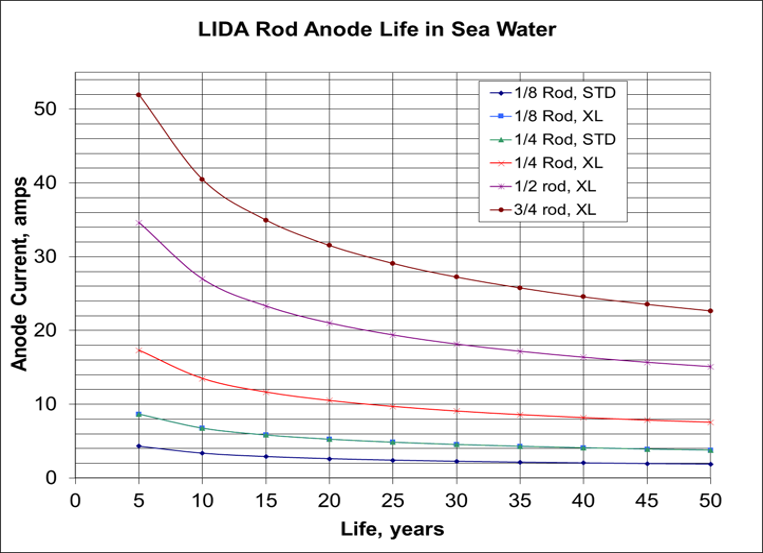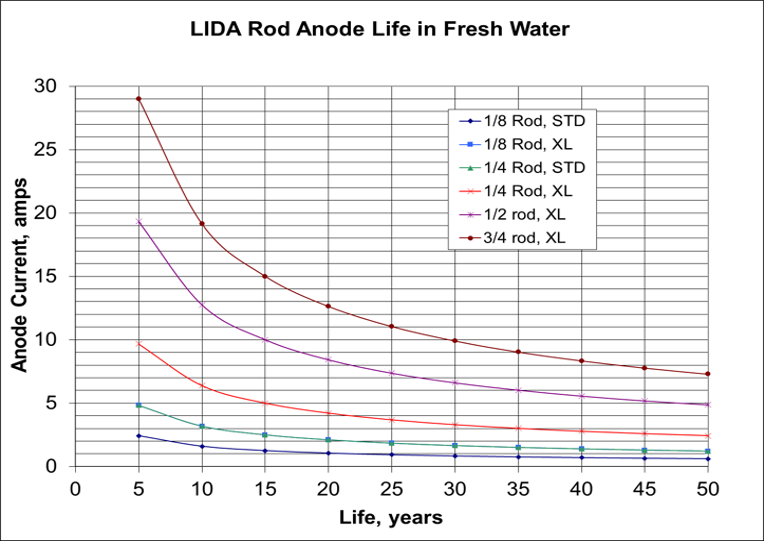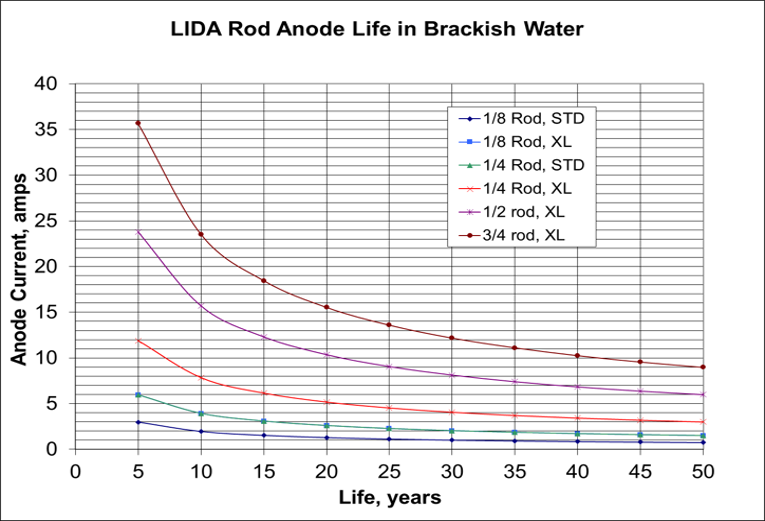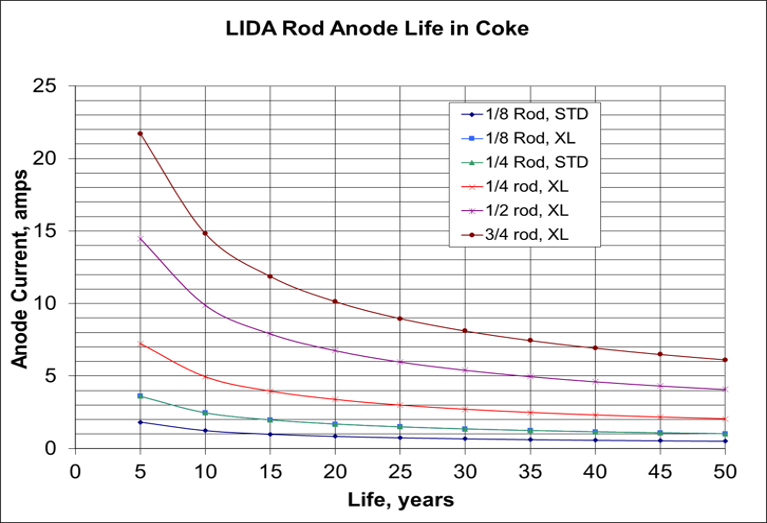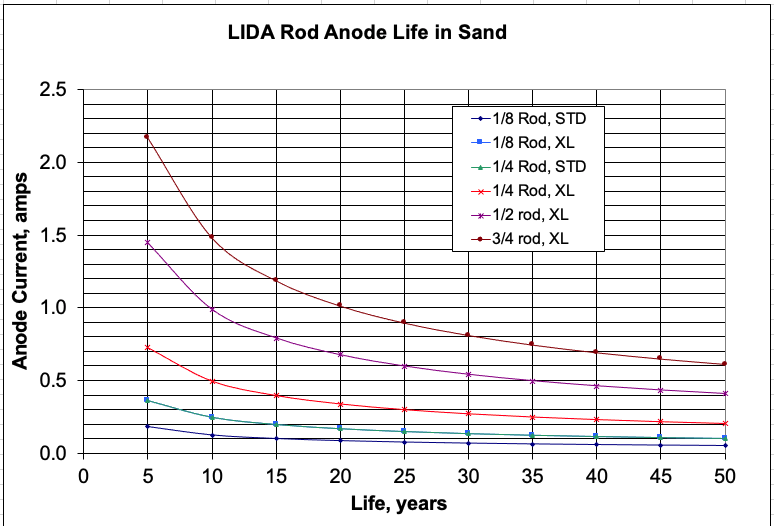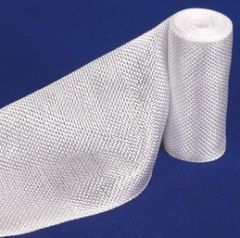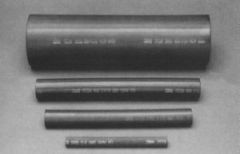Lida MMO Solid Rod Anodes by De Nora Tech
LIDA Rod Anodes are comprised of a titanium substrate with a mixed metal oxide (MMO) coating. The mixed metal oxide is a crystalline, electrically conductive coating that activates the titanium and enables it to function as an anode.
The rod anodes are provided in a standard 4 foot length, but the anodes may be custom cut to virtually any length. The standard anode diameters include 1/8", 1/4", 1/2", and 3/4". Anode coatings are available in "Standard" or "XL" depending on your application or anode current and/or life requirements.
At Farwest, we can custom fabricate an anode assembly to include the LIDA anode rod of your choice. This includes adding a cable lead with connection encapsulation, customizing probe-type anodes and more. Contact a Farwest representative to assist you with your fabrication questions.
Applications
- Process or Production Vessels
- Water Condenser Boxes
- Heat Exchangers
- Water Intake Structures
- Groundbed (in coke breeze)
Features
- High Current Output
- Low Coating Wear Rate
- Five Year Product Warranty
- Also available as Rod Anode Assemblies
Benefits
- Lower Cost per Ampere-Year
- Constant Electrical Resistance
- No Hassles
Standard Anode Rod Sizes
LIDA Rod Anodes are available in these standard sizes:
- 1/8" x 4'
- 1/4" x 4'
- 1/2" x 4'
- 3/4" x 4'

Typical Rated Current Output
| Application | Anode Dia. (inches) |
Design Life (years) |
Rated Current Output (Amps per linear inch) |
||
| Freshwater | 0.125 0.25 0.50 0.75 |
10 10 10 10 |
20 20 20 20 |
0.067 0.134 0.268 0.400 |
0.044 0.088 0.167 0.270 |
| Seawater | 0.125 0.25 0.50 0.75 |
10 10 10 10 |
20 20 20 20 |
0.140 0.280 0.570 0.840 |
0.123 0.245 0.490 0.740 |
| Coke | 0.125 0.25 0.50 0.75 |
10 10 10 10 |
20 20 20 20 |
0.052 0.103 0.210 0.310 |
0.035 0.069 0.140 0.210 |
| Sand | 0.125 0.25 0.50 0.75 |
15 15 15 15 |
30 30 30 30 |
0.0167 0.0033 0.0067 0.0100 |
0.00094 0.0019 0.00375 0.00556 |
Selection of the anode coating is based on operating environment.
![]()
Standard Rod Anode Assemblies

For applications in vessel internals, De Nora Rod Anodes are available with mounting
assemblies, consisting of an FRP dielectric shield and 1" or 1.25" NPT nipple
|
Freshwater or
Brackish Water |
Sea Water
Environments |
|||
|
Part Number
|
FA-ROD 0.5FW
|
FA-ROD 0.75FW
|
FA-ROD 0.5SW
|
FA-ROD 0.75SW
|
|
Max. Current Output (amps)
|
1.6
|
2.4
|
9.7
|
14.6
|
|
Rod Diameter (in)
|
0.5
|
0.75
|
0.5
|
0.75
|
|
Total Length (in)
|
24
|
24
|
24
|
24
|
|
Active length max-user specified (in)
|
16
|
16
|
16
|
16
|
|
FRP Length (in)
|
6
|
6
|
6
|
6
|
| NPT Pipe Nipple | 1.0" | 1.25" | 1.0" | 1.25" |
|
Maximum water velocity (ft/sec)
|
2
|
5
|
2
|
5
|
![]()
Drag & Vibration Data of Rod Anode Assembly
 |
 |
 |
|
![]()
Anode Life Data
 |
 |
 |
 |
Lida MMO anode rods are available in a number of impressed current assembly confiruations that include:
- Probe anode assemblies for insertion into interiors of oil or other production vessels
- For soil (with coke breeze) or water applications with a single lead wire
- For soil applications where the rod is installed in a canister with coke breeze backfill
Probe Anode Assemblies
Probe anodes are typically for use in the interiors of oil or other production vessels. Configurations vary depending on the performance requirements, fitting sizes, etc. Contact a Farwest representative for assistance in an anode design.
De Nora also provide a custom rod assembly consisting of consisting of an FRP dielectric shield and 1" or 1.25" NPT nipple. Details of this anode assembly are shown below. Availability depends on anode quantity as these are custom built assemblies.

|
Freshwater or
Brackish Water |
Sea Water
Environments |
|||
|
Lida Part Number
|
FA-ROD 0.5FW
|
FA-ROD 0.75FW
|
FA-ROD 0.5SW
|
FA-ROD 0.75SW
|
|
Max. Current Output (amps)
|
1.6
|
2.4
|
9.7
|
14.6
|
|
Rod Diameter (in)
|
0.5
|
0.75
|
0.5
|
0.75
|
|
Total Length (in)
|
24
|
24
|
24
|
24
|
|
Active length max-user specified (in)
|
16
|
16
|
16
|
16
|
|
FRP Length (in)
|
6
|
6
|
6
|
6
|
| NPT Pipe Nipple | 1.0" | 1.25" | 1.0" | 1.25" |
|
Maximum water velocity (ft/sec)
|
2
|
5
|
2
|
5
|
Conventional Style Assemblies
![]()
Anode performance and life will vary depending on a number of factors including rod diameter, length, coating type and the environment or electrolyte the anodes will be utillized. The following graphs will help you to understand the theoretical current output and life expectancy in various electrolytes.
Example: In graph number 1, a 1/4" diameter, 48" long, XL coated anode in free-flowing seawater is designed to provide 10 amps DC for approximately 22 years. Compare that with graph 5 where the same anode in coke breeze backfill will only provide a little over 3 amps DC for the same time period.
As you can see, anode performance will vary greatly depending on the application so it is important to understand this relationship when designing any anode.
